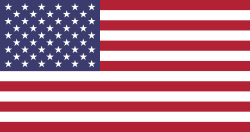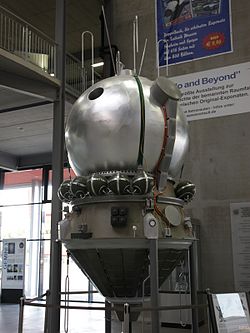STS-33
| STS-33 | |||||
 | |||||
| Uppdrag | 32 | ||||
|---|---|---|---|---|---|
| Rymdfärja | Discovery (9)[1] | ||||
| NSSDC-ID | 1989-090A[2] | ||||
| Färdens tid | 5 dagar, 0 timmar, 6 minuter, 49 sekunder | ||||
| Uppskjutning | |||||
| Startplats | Startplatta 39B vid Kennedy Space Center i Florida | ||||
| Start | 22 november 1989, 7:23:30 p.m. EST | ||||
| Landning | |||||
| Landningsplats | EAFB, Runway 4 | ||||
| Landning | 27 november 1989, 4:30:16 p.m. PST | ||||
| Omloppsbana | |||||
| Varv | 78 st[3] | ||||
| Apogeum | 214 km | ||||
| Perigeum | 207 km | ||||
| Banlutning | 28,45° | ||||
| Sträcka | 3,400 miljoner km | ||||
| Besättning | |||||
| Befälhavare | Frederick D. Gregory (2) | ||||
| Pilot | John E. Blaha (2) | ||||
| Uppdragsspecialister | Story Musgrave (3)Kathryn C. Thornton (1) | ||||
 | |||||
| Kronologi Rymdfärjeprogrammet | |||||
| |||||
STS-33 var den trettioandra flygningen i det amerikanska rymdfärjeprogrammet och nionde i ordningen för rymdfärjan Discovery. Den sköts upp från Pad 39B vid Kennedy Space Center i Florida den 22 november 1989. Efter fem dagar i omloppsbana runt jorden återinträdde rymdfärjan i jordens atmosfär och landade vid Edwards Air Force Base i Kalifornien.
Flygningen gjordes på uppdrag av USA:s försvarsdepartement.
Se även
Referenser
- ^ NASA Space Shuttle Launch Archive Arkiverad 25 juli 2010 hämtat från the Wayback Machine., läst 28 juli 2016.
- ^ ”NASA Space Science Data Coordinated Archive” (på engelska). NASA. https://nssdc.gsfc.nasa.gov/nmc/spacecraft/display.action?id=1989-090A. Läst 18 mars 2020.
- ^ Manned Astronautics - Figures & Facts Arkiverad 4 mars 2016 hämtat från the Wayback Machine., läst 28 juli 2016.
Externa länkar
 Wikimedia Commons har media som rör STS-33.
Wikimedia Commons har media som rör STS-33.
| ||||||||
| ||||||||||||||||||||||||||||||||
Media som används på denna webbplats
Författare/Upphovsman: Pascal (Flickr user: pasukaru76), Licens: CC0
Vostok spacecraft replica at the Technik Museum Speyer, Germany.
STS-33 Mission Insignia
STS-34 Mission Insignia
On November 22, 1989, at 7:23:30pm (EST), 5 astronauts were launched into space aboard the Space Shuttle Orbiter Discovery for the 5th Department of Defense mission, STS-33. Photographed from left to right are Kathryn C. Thornton, mission specialist 3; Manley L. (Sonny) Carter, mission specialist 2; Frederick D. Gregory, commander; John E. Blaha, pilot; and F. Story Musgrave, mission specialist 1.
STS-32 Mission Insignia
- The STS-32 patch, designed by the five crewmembers for the January, 1990 space mission, depicts the Space Shuttle orbiter rendezvousing with the Long Duration Exposure Facility (LDEF) satellite from above and the Syncom satellite successfully deployed and on its way to geosynchronous orbit. Five stars represent the mission number with three on one side of the orbiter and two on the other. The seven major rays of the sun are in remembrance of the crewmembers for STS 51-L. In preparation for the first Extended Duration Orbiter (EDO) missions, STS-32 conducted a number of medical and middeck scientific experiments. The caduceus on the left represents the medical experiments, and the crystalline structure on the right represents the materials science. The crew is comprised of Astronauts Daniel C. Brandenstein, James D. Wetherbee, Bonnie Dunbar, Marsha S. Ivins, and G. David Low.








